Experimental and prototype weapons of Izhevsk Machine-Building Plant (assault rifles and rifles)
Experimental and prototype weapons of Izhevsk Machine-Building Plant
In 1959, a modernized Kalashnikov assault rifle was adopted by the SA. In the same year, a new search research project began - the development of new schemes of small arms for regular cartridges based on the search for more advanced principles of automation, allowing to obtain samples of weapons with a simple design, low weight and reliability in operation. Under the guidance of the head of the bureau I.Ye.Semenov, young specialists of the plant, graduates of the Izhevsk Mechanical Institute - A.I.Nesterov, B.M.Zorin, R.S.Povarenkin and a graduate of the Leningrad Military-Mechanical Institute Yu.K. .Aleksandrov. As a result, LA and AL automatic machines (light automatic) were developed.
Automatic LA-2. The sample was developed by the designer of Izhevsk Machine-Building Plant A.I.Nesterov in 1961 under the influence of the factory competition to facilitate the AKM machine gun being mastered. During its design, technical solutions for the design of the developed SVD rifle were used. In the sample, the frame stroke limit is applied in the extreme rear position on the front liner of the receiver. This made it possible, due to the elasticity of its walls, to reduce the impact of the impact of moving parts in the extreme position on the tip of the weapon. The machine demonstrates increased accuracy of shooting a single fire. The location of the recoil spring on the left side of the slide frame allowed reducing its height and the height of the weapon as a whole. The fly is combined with a gas chamber, the diopter sight is completely placed on the receiver cover. In the upper part of the gas chamber there is a hole for cleaning the gas outlet, which in the fighting position is blocked by a crane. Machine weight reduced to 2,15 kg
Automatic LA-3. The sample was developed by designer B.Zorin in 1962 year. Its feature is the work of automation, based on the course of the trunk forward. The mechanisms of the machine is distinguished by its simplicity. Tests of the sample revealed increased dispersion when firing bursts due to the appearance of additional impulses when the barrel moves forward.
Automatic LA-4, designer A.I. Nesterov, 1964 year. The principle of operation of automation - the use of recoil energy of the trunk during its long course. The use of this principle of automation has significantly reduced the recoil of the weapon when fired. The recoil springs of the barrel and bolt carrier are arranged concentrically on one guide rod (on the inside there is a barrel spring, on the outside a bolt frame spring). All parts USM, including the trigger, made by stamping of the sheet. The translator of fire modes and the safety device are made separately, the sight is placed in the handle for carrying the weapon. To increase the ease of handling the weapon, the control handle is tilted to the right.
Automatic AL-2. Designers Yu.K.Aleksandrov and R.S.Povarenkin, 1960-70-ies. A sample of a new series of light automata, originally developed for the cartridge 7,62x39, and later for the cartridge 5,45x39. It has a classic scheme of automation with a side gas engine, located in the layout of the bull-pup. In the design of the machine applied the limitation of the frame in the rearmost position on the front liner of the receiver. This allowed (due to the elasticity of its walls) to somewhat reduce the impact of the impact of moving parts in the extreme rear position on the tip of the weapon. The placement of the return spring on the right side of the bolt carrier ensured a reduction in the height of the receiver. The gas chamber of the automaton (closed type, equipped with a two-position gas regulator) serves simultaneously as the base of the sight. Details of the firing mechanism are made completely by stamping from a sheet. Later on, in 1970-ies, in the work on the AL series machines, the use of a progressive trigger and a scheme of work with balanced automation was tested.
In general, the work on the experimental series of light automata, which were sometimes distinguished by the most unexpected automation schemes, made it possible to analyze the strengths and weaknesses of the application of various technical solutions.
7,62-mm LA-2 automatics designed by AI Nesterov, experimental sample 1961. Cartridge magazine capacity 30, target range 1000 m
The 7,62-mm LA-3 machine gun designed by BM Zorin, an experimental sample of 1962. Cartridge magazine capacity 30, target range 1000 m
7,62-mm LA-4 automatics designed by AI Nesterov, experimental sample 1964. Cartridge magazine capacity 30, target range 1000 m
5,45-mm automaton AL-2 designed by Yu.K.Aleksandrov and R.S.Povarenkina, experimental sample 1960-70-x 30 magazine capacity, ammunition range, 1000 m
Scientific research on the development of small-sized machine
State competition "Modern"
In 1973, the Ministry of Defense announced the Modern contest for the creation of a small-sized machine gun intended for the crews of military equipment. At Izhevsk Machine-Building Plant developed several versions of shortened machines. An attempt to miniaturize the automaton was undertaken by Yevgeny Antonovich Popovich in the PPL submachine gun. In this model, a significant reduction in the size and weight of the weapon was achieved by rearranging the feed mechanisms, firing mechanism and gas engine, and miniaturization of parts. The gas chamber of the machine is combined with the front sight. The sight in the form of reversible rear sight for two distances is located on the cover of the receiver, fixed with a special latch. Butt machine - metal frame, the original form, folded on the left side. The barrel of the weapon is equipped with a muzzle device (compensator).
In the future, E.A. Popovich was transferred to the group of M.T. Kalashnikov for the development of a small-sized machine based on the full-time AK74 and took part in the development of the AKS74U. It was this machine that was submitted to the state competition by the plant and in 1979 was adopted for providing crews of combat vehicles, guns and other army personnel for whom the AK74 machine gun was too large. The advantages of AKS74U include high mobility in cramped conditions (indoors, inside the car), the possibility of hidden wear, a rather high penetrating ability of the cartridge. The disadvantages include a relatively small sighting range of fire (with a large slaughter range of ammunition), low stopping effect of the bullet.
Also within the framework of the research work “Modern”, on the instructions of TsNIITOCHMASH, a version of the MA small-sized machine gun (designed by EF Dragunov) was developed with extensive use of plastic as a construction material. A maximum of parts (including the receiver, the magazine and the handle) are made of high-strength polyamide. The design feature is the location of the moving parts of the machine on the cover of the receiver, and not in the box itself, low aiming line, ergonomics.
5,45-mm automatic machine PPL designed by Yu.K.Aleksandrov and E.A. Popovich, prototype 1973-76 30 magazine capacity, ammunition range, 500 m
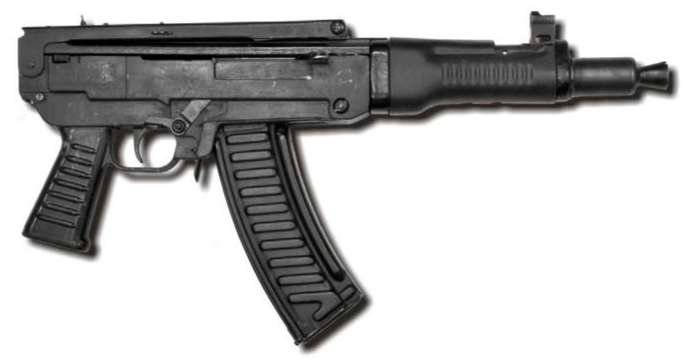
5,45-mm automaton MA designed by EF Dragunov, experimental sample 1977-78. 30 magazine capacity, ammunition range, 500 m
Technical solutions and practical experience in creating small-sized 1970's automata. found their continuation in the later work on the creation of submachine guns "Bizon" and "Vityaz" for the Ministry of Internal Affairs and the FSB in the 1990-2000's.
Research on the use of alternative ammunition
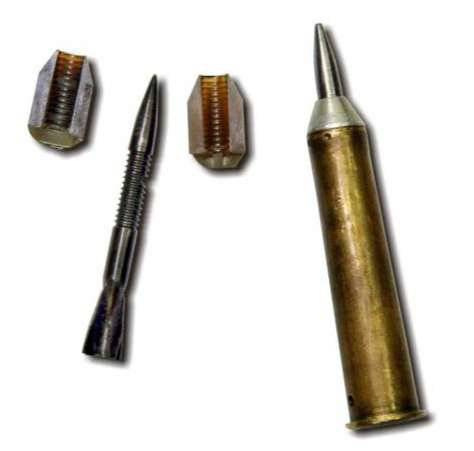
Cartridge with subcaliber fired bullet caliber 4,5 / 10 mm. THE USSR. 1970-s.
In the 1970-s in the conditions of the arms race in the USSR and the USA, work was almost parallel to increase the combat effectiveness based on the search for new work patterns of automation and determine the effectiveness of the use of new ammunition. A number of exploratory research was carried out in the OGK of the Izhevsk Machine-Building Plant using new ammunition developed at TsNIITOCHMASH - cartridge with arrow-shaped bullet of 4,5 mm caliber, cartridgeless cartridge of 7,62 mm and 5,6 mm caliber.
Research on the creation of a sniper rifle under the arrow-shaped ammunition received the code name "Finval." An experimental sample of a sniper rifle designed by N. S. Lukin with a magazine with a capacity of 15 cartridges was developed based on the Dragunov sniper rifle. A feature of the design of the rifle is the use of a smooth barrel without making rifling in the channel. The peculiarity of the ammunition is the high speed of the boom flight (1100-1200 m / s) and high flatness of the trajectory (direct shot range). For obturation, when passing through the barrel bore, the boom was in a special plastic (aluminum) pan, which was destroyed by a special muzzle device when fired. The main disadvantages of such a scheme were the danger of injury to the shooter or those surrounding the fragments of the pallet, as well as the low stopping effect of the boom and poor accuracy. NIR was closed.
A sniper rifle on the topic “Finwap” designed by N.S. Lukin, an experimental sample for an 4,5-mm cartridge with a swept bullet. 1970-s. 15 magazine capacity
Work on the application of the cartridgeless cartridge began in the context of the interdisciplinary competition announced by the USSR Ministry of Defense Industry in the year 1972. An experimental series of automata under the sleeveless 5,6-mm cartridge, developed at the Izhevsk Machine-Building Plant, was named AB. A feature of this scheme is the absence of the cartridge case in the cartridge, the bullet is located inside the compacted gunpowder, which almost completely burns when fired, and therefore there is no need to assemble the mechanisms necessary for throwing and reflecting the cartridge case, the mass of ammunition is facilitated. However, studies have revealed unsatisfactory reliability of storage of the sleeveless cartridge, the uneven burning of compressed gunpowder at low and high temperatures (the powder crumbles or splits into pieces), which leads to instability of the pressure in the barrel. There were also problems with the obturation when fired, which the sleeve provides in the classic cartridge layout.
5,6-mm automaton AB-3 designed by BM Zorin and PN Korolev, experimental sample for cartridgeless cartridge, 1970-s.
Research work to improve combat effectiveness
Due to the lack of prospects for the use of new ammunition schemes, work was continued to improve the combat effectiveness of small arms with the use of a standard low-pulse cartridge 5,45x39. At the end of 1970-s, R & D began in search of a scheme that allows to increase combat effectiveness by 1,5-2 times (as compared to the standard AK74), which received the code name "Checkbox". At Izhevsk Machine-Building Plant, several mock-ups and experimental samples of automata were developed and manufactured, including an AF machine designed by EF Dragunov. A feature of the sample is the use of technical solutions of the sniper rifle to an automatic weapon chambered for 5,45x39, which led to an increase in the accuracy of firing with single fire and preserving the dimensions of the sniper weapon.
5,45-mm automaton “AF” on the topic “Checkbox” designed by EF Dragunov, experimental sample of 1970's. 45 magazine capacity, ammunition range, 1000 m
Work was also carried out to improve the combat effectiveness of the light machine gun. A series of experimental PU machine guns chambered for the 5,45x39 was developed. The main performers for the development and testing of experimental samples of machine guns - Yu.K.Aleksandrov, M.E. Dragunov, V.M. Kalashnikov.
The machine guns were a ribbon-powered weapon, from which it was possible to conduct firing using regular machine gun and machine-gun stores. Machine guns were quite thoroughly tested at TsNIITOCHMASH and at the test site in Leningrad, but military experts did not see convincing arguments for replacing regular PKK and RPK74 machineguns. According to the military, the new model with the complexity of the design did not have an increase in combat effectiveness. However, an interesting fact is the later appearance of a similar arrangement of the Minimi machine gun by the Belgian company FN, which was adopted by many armies, including in the US Army under the symbol M249.
5,45-mm light machine gun PU-2 designed by M.Ye. Dragunov and V.M. Kalashnikov, experimental sample 1972-77. 45 magazine magazine capacity, 200 cartridge cartridge capacity, target range 1000 m
The original layout of the moving parts is another development of the Izhevsk Machine-Building Plant - a high-temperature double-barreled machine gun designed by G.N. Nikonov. Its feature is two moving barrels, each of which is driven by a gas outlet of a neighboring barrel, the work of the barrels is synchronized through a rack and pinion gear. The presence of two barrels and the minimum possible magnitude of the stroke of each of them allowed to ensure the rate of fire of more than 3000 shots / min. This work was carried out on an initiative basis and was aimed at evaluating the work of the automation of this layout of nodes.
5,45-mm high-grade light machine gun designed by G.N. Nikonov, experimental sample 1977-78. Firing rate over 3000 shots / min., Sighting range 1000 m
The development work (R & D) became a logical continuation of the “Flag” research, but already under the conditions of an interdisciplinary state competition with the code designation “Abakan”, announced by the decision of the commission of the Presidium of the USSR Council of Ministers on military-industrial issues of 27 August 1981, to create a new machine, exceeding the combat effectiveness of regular AK74 1,5-2 times. The main condition was a significant improvement in accuracy of automatic firing. The difficulty of the task was that it had to be solved only at the expense of the machine, without changing the cartridge. The new machine in its dimensions was supposed to be similar to AK74 while maintaining its best combat and operational qualities (the Kalashnikov machine gun was unconditionally recognized as the world standard of reliability).
Development of an automatic with increased combat effectiveness in the state competition "Abakan"
The competition for the development of a new machine 12 were involved in the best specialized design teams of the country, including several design offices of OGK Izhevsk Machine-Building Plant. The entire experience of previous works testified that a solution can be found only with a radical change in the design of the weapon. In the bureau of A.I.Nesterov (where GNNikonov worked), based on the theoretical predictions of TsNIITOCHMASH and information about the West German rifle G11, the choice was made in favor of the recoil momentum bias scheme (as the most promising). At the same time, it was clear that this leaves no room for broad unification with the AK74 machine gun.
Figuratively speaking, the meaning of the scheme with a displaced recoil impulse is to “deceive” the recoil from the shot, that is, to make it happen after two or three bullets leave the barrel - in this case the recoil will not affect the accuracy of the impact. GNNikonov was appointed the leading developer of the new machine. The first layout with a displaced recoil impulse, while simultaneously providing a high rate of firing in the layout and a three-shot cut-off line (one press of the trigger triggers three shots at once), showed extremely optimistic results when shooting automatic firing in short bursts. The management of the plant work was taken under special control. Experimental samples were developed that received the designation ON-2 and ON-4, made in the "bull-pup" arrangement (with the return mechanism and the machine magazine located not in front, but behind the trigger guard and handle, that is, in the butt).
In 1983-86, in the bureau of GNNikonov, automatic speaker systems were developed in the classical layout, but with a side arrangement of the store. This scheme was applied based on the features of this type of automation - inside the case of the machine there is a movable firing unit, including a barrel, a receiver, moving parts and a magazine. The main drawback of the design was that when firing, an openly located magazine moved at high speed relative to the casing, which could lead to strikes against surrounding objects with delays in shooting, breakdowns and injuries.
5,45-mm machine gun ON-4 designed by G.N. Nikonov, experimental sample 1981. Amount of 30 magazine ammunition, target range 1000 m, mass 3,83 kg, rate of stitter 600 / 1800 rds / min.
5,45-mm machine gun, designed by G.N. Nikonov, prototype 1984. Cartridge capacity 30, ammunition range 1000 m, weight 3,18 kg, rate of shooting 600 / 1800 rds / min.
Another design group of the Izhevsk Machine-Building Plant under the direction of V.M. Kalashnikov took part in the Abakan competition. In the AKB-1 and AKB machines it presented, a scheme with balanced automation was applied. When fired, when the bolt carrier begins to move backward with a bolt, a special detail - the rail - begins to move forward and in the extreme rear position the bolt carrier collides not with the receiver, but with the movable rail. The energy of their movement is mutually compensated, increasing the stability of the machine, and, accordingly, accuracy and accuracy of fire.
The results of the competition for the development of automatic machines chambered for 5,45x39 showed that automatic rifles with balanced automatics in firing efficiency from unstable positions were 1,2 times as large as automatic rifles in the usual standard layout. The first samples were developed on the basis of the AL-6 automata (designed by Yu.K.Aleksandrov). In 1984, the automatic machine with balanced automatic battery AKB-1 was presented for testing, in which a moving barrel is used as a balancer.
1984-85 Tests showed that none of the samples submitted meets the requirements of the Abakan technical specification for effectiveness when shooting in short bursts. In 1985, the group of V.Kalashnikov developed and presented for testing an automatic machine with balanced automatic batteries. The machine has three shooting modes:
- single fire;
- shooting with a fixed burst at 2 shot;
- automatic fire.
However, further tests revealed the prospect of using a circuit with a displaced recoil impulse, used by G.N. Nikonov, and the main efforts were directed to the revision of automated systems.
5,45-mm automatic battery AKB-1 designed by V.M. Kalashnikov, prototype 1984. Cartridge capacity of 30 ammunition, target range 1000 m
5,45-mm automatic battery of design by V.M. Kalashnikov, prototype 1985. Capacity of 30 magazine of cartridges, target range 1000 m, rate of shooting 1000 / 2000 shots / min.
In the spring and summer of 1986, at the preliminary tests at TsNIITOCHMASH of an AS machine gun, he showed for the first time that he complied with all the requirements of the tactical and technical assignment on the Abakan topic in accuracy and accuracy. This machine has a classic layout and vertical location of the store, the mobile store is covered in the front position with a special folding stand. At the same time, an AFM machine with a fixed magazine was tested at the test site, with a fixed burst of 2 shots. It was recommended for subsequent implementation.
At each new stage of the competition, Nikonov brought samples of automata that were absolutely new in design, which received the designations AU, and later CAM. In the process of finding ways to significantly improve the accuracy of fire on prototypes, various designs of parts and mechanisms, various layouts were tested. The submachine gun has undergone a number of changes concerning comfort and application when shooting; the use of various muzzle nozzles was tested.
5,45-mm machine gun, designed by G.Nikonov, prototype 1986. Cartridge capacity 30, ammunition range 1000 m, weight 4,07 kg, speed X XUMUM / 600 strad./min.
5,45-mm automaton AFM designed by G.N. Nikonov, prototype 1986-87. 30 magazine capacity, ammunition range 1000 m, rate of fire 600 / 1800 shots / min.
5,45-mm automaton AFM designed by G.N. Nikonov, prototype 1986-87.
5,45-mm automaton AFM designed by G.N. Nikonov, prototype 1986-87.
Refinement of the AFM at the final stages of the competition (at the end of 1980-s - the beginning of 90-s) concerned those characteristics that were considered secondary at the first stage of work. A more compact arrangement of the automaton units was required in order to improve ergonomics, the introduction of more technological injection polymer construction materials, the adaptation of technologies for mass production, the possibility of attaching standard instruments (sights, bayonetes, grenade launchers, etc.).
As a result, after the test sites and a series of control tests, for which samples that were previously withdrawn from the competition were allowed for individual decisions, the commission issued the following conclusion. The ASM machine gun, as the most satisfying of all the samples presented, meets the requirements of the technical specifications for the main combat characteristics: accuracy of automatic firing, trouble-free operation in various conditions, durability of parts and effectiveness of firing, which showed the best results in combat effectiveness compared to other automata. for military trials.
For military trials, it was necessary to manufacture not two or three automatic rifles, as in the previous stages, but a batch of 120 units. The difficulty was that the revision of the machine to eliminate the comments made during the tests, was carried out simultaneously with the manufacture of the party. The comments related to issues that were considered minor at the previous stages of sample development compared to the main task - ensuring accuracy. These, in particular, were the requirements to ensure the use of the machine in military equipment, which meant the need to ensure the installation of the machine in the same connecting places of military equipment (armored personnel carriers, infantry fighting vehicles, helicopters), which were once worked out for the configuration and dimensions of the AK74. Therefore, in appearance and dimensions, the machine became more and more like a regular AK74. By the last stage of the state ground tests 1994 of the year, the appearance of an automaton was formed, which received the official name “Nikonov's 5,45-mm automat” AN-94, under which the Russian Federation Government adopted it in 1997.
In the AN-94 machine gun, it was possible to achieve an increase in combat effectiveness by 1,5-2 times, and an increase in the accuracy of fire - by 7-13 times in comparison with the standard AK74. The dimensions of the automatic machine AN-94 were able to be closer to the dimensions of AK74.
5,45-mm automaton AFM designs by G.N. Nikonov, prototypes 1988-90. 30 magazine capacity, ammunition range 1000 m, rate of fire 600 / 1800 shots / min.
Work on the creation of a self-loading sniper rifle for the army in a state competition
In 1958, within the framework of the state competition, the engineering plant was given the task of developing a self-loading sniper rifle for the army. The work was very difficult due to the lack of examples in weapons practice of creating a self-loading sniper rifle (with the possibility of fast automatic reloading during a miss and firing a subsequent shot while maintaining high accuracy rates). The development of a semi-automatic rifle was entrusted to EF Dragunov. His rivals were SG Simonov and AS Konstantinov, who had extensive experience in the development of automatic and self-loading weapons, which Dragunov did not have. But Yevgeny Fyodorovich, in contrast to them, had experience working with target weapons.
The competition was held in several stages. In the first tests at the Shchurovo training ground near Moscow, a prototype of the self-loading sniper rifle, the CER-58, showed very high accuracy results, significantly surpassing its competitors. However, the reliability of the rifle was unsatisfactory - the rifle failed after every 500-600 shots. All three samples were recommended for revision for the passage of new ground tests in 1960, after which the Simonov rifle dropped out of the competition. Two samples remained - Dragunov and Konstantinov, recommended for revision.
The final tests were carried out in December 1961-th - January 1962 g. In the sample of Dragunov, the supply of cartridges was improved. Konstantinov rifle showed the worst result in accuracy. A sample of Yevgeny Dragunov was recommended for military testing. In the summer of 1962, the first experimental batch was manufactured in quantities of 40 units (CER-58 variant for military trials). After the next modifications and introduction of the chrome coating of the barrel bore, the sample was recommended for adoption, its serial production begins with the 1964. Distinctive features of the Dragunov rifle, providing high sniper qualities, are:
1. locking scheme for three lugs, which has now become an indispensable element of high-precision weapons;
2. the design of the forearm ensures the stability of the middle point of impact when the barrel is heated from long-term shooting;
3. butt design provides ease of manufacture (is a further development of the sports butt);
4. separate use of the gas piston and the bolt, which also provides stability;
5. reliably working shop chambered with a rim.
Some foreign weapons editions gave SVD the title of the best army sniper rifle of the 20th century, since it was the first in the world to develop a self-loading sniper rifle, which gives such high rates of accuracy.
7,62-mm sniper rifle CER-58 designed by EF Dragunov, prototype 1958, magazine capacity 20 ammunition, target range 1200 m
7,62-mm sniper rifle CER-58 designed by EF Dragunov, a prototype of the 1960-x. 20 magazine capacity, ammunition range, 1200 m
Despite the fact that the SVD was adopted in secret without a neck, reliable information about it in the foreign press appeared only during the Afghan war. With the outbreak of hostilities, it became necessary to make the SVD more compact, since it didn’t fit well into the limited space of the infantry fighting vehicles and armored personnel carriers. In the 1980-s, at the request of the Ministry of Defense of the USSR, new shortened versions of the rifle were developed at the Izhevsk Machine-Building Plant, with elaboration to improve the manufacturability of its manufacture.
The prototype SVD with a stamped receiver was designed by the son of Evgeny Fedorovich Mikhail Dragunov in 1981. However, these studies did not succeed, as the rigidity of the receiver was lower, which negatively affected the accuracy of fire.
7,62-mm sniper rifle SVD designed by M.E. Dragunov, prototype 1981. Magazine's 20 magazine capacity, target range 1200 m
The shortened model of the SVD with a folding butt was also developed by Yevgeny Fedorovich himself at the end of 1980's before retirement (one of his latest developments). The work on the folding butt rifle was completed by a team led by Azariy Ivanovich Nesterov. There were two working versions of the SVD with a folding butt — with the 620 mm barrel (SIDS-A index, that is, the army) and with the 590 mm barrel (SIDS-D amphibious). 26 August 1995 model year received the SIDS index and was put into service.
7,62-mm shortened SVD sniper rifle with a folding butt designed by EF Dragunov, a prototype of the end of 1980-s. 20 magazine capacity, ammunition range, 1200 m

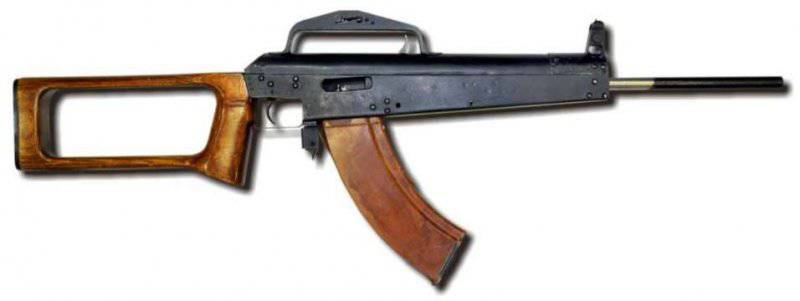
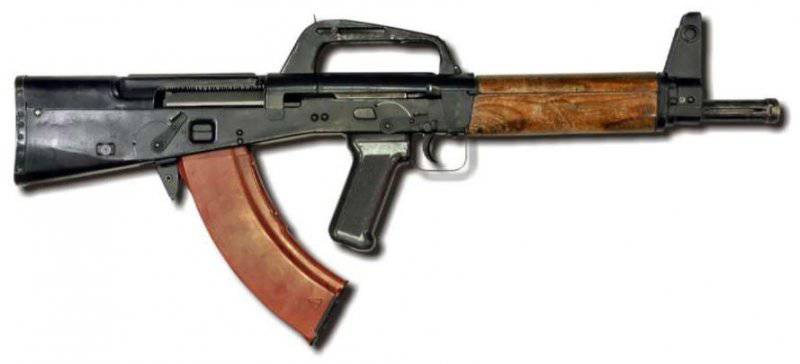
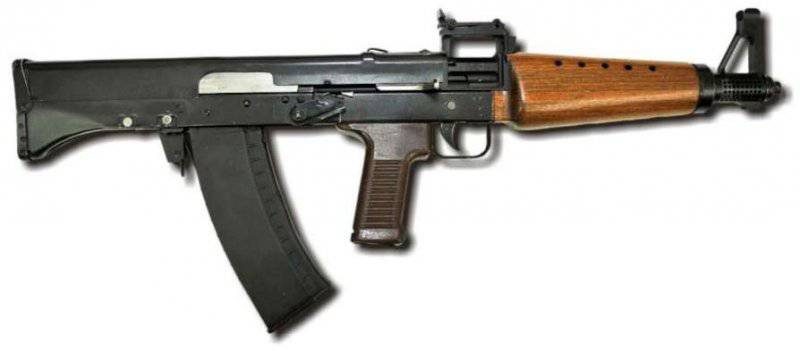
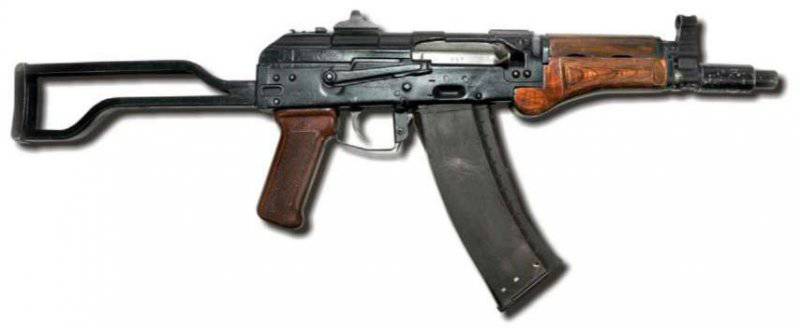



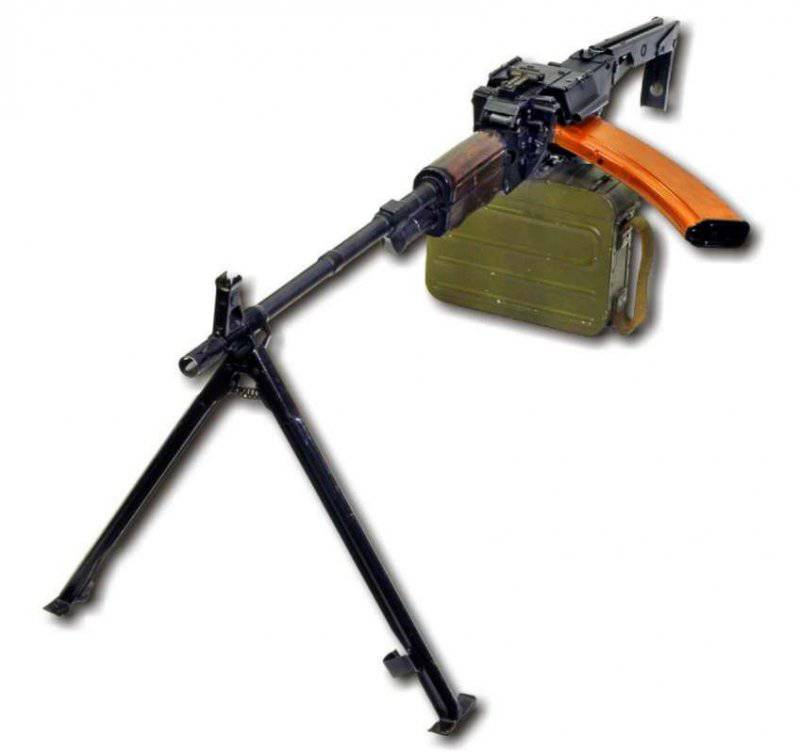
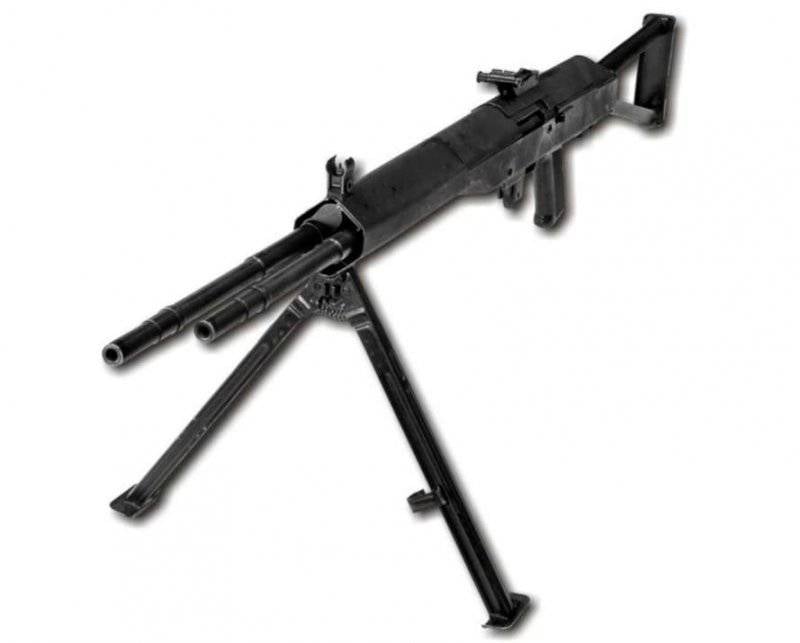
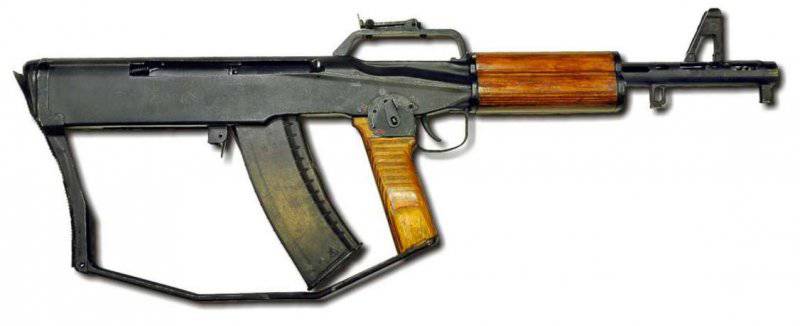















Information